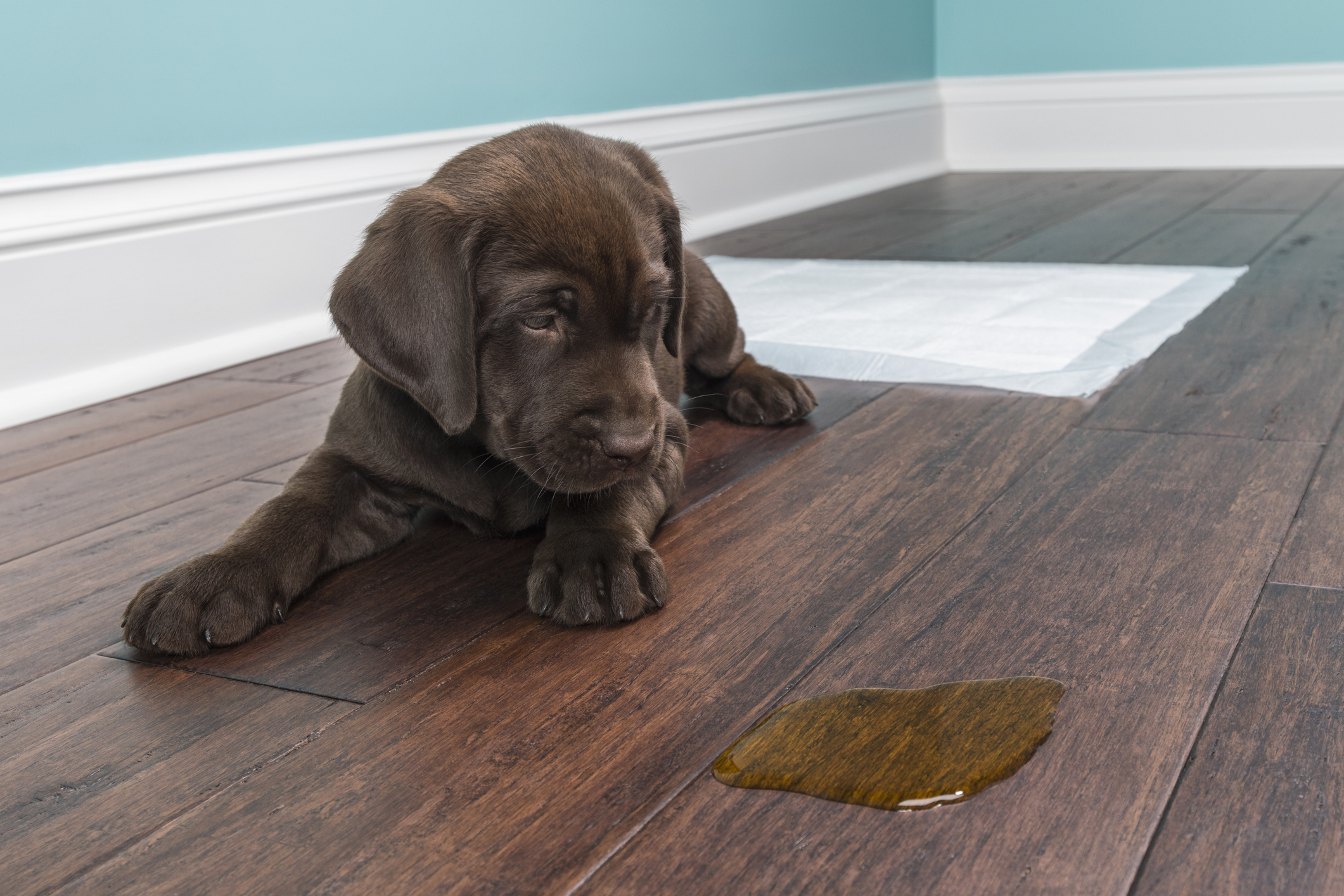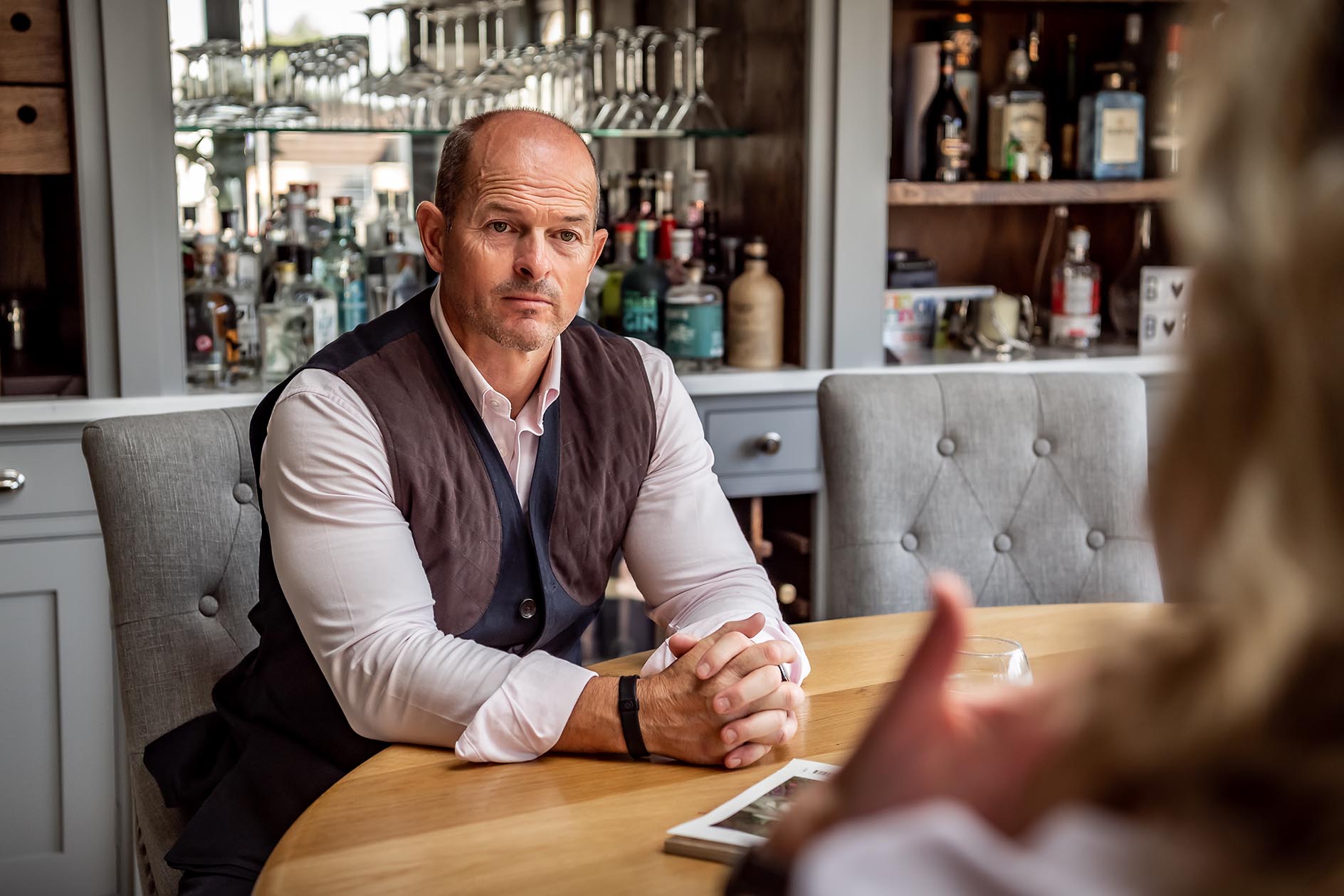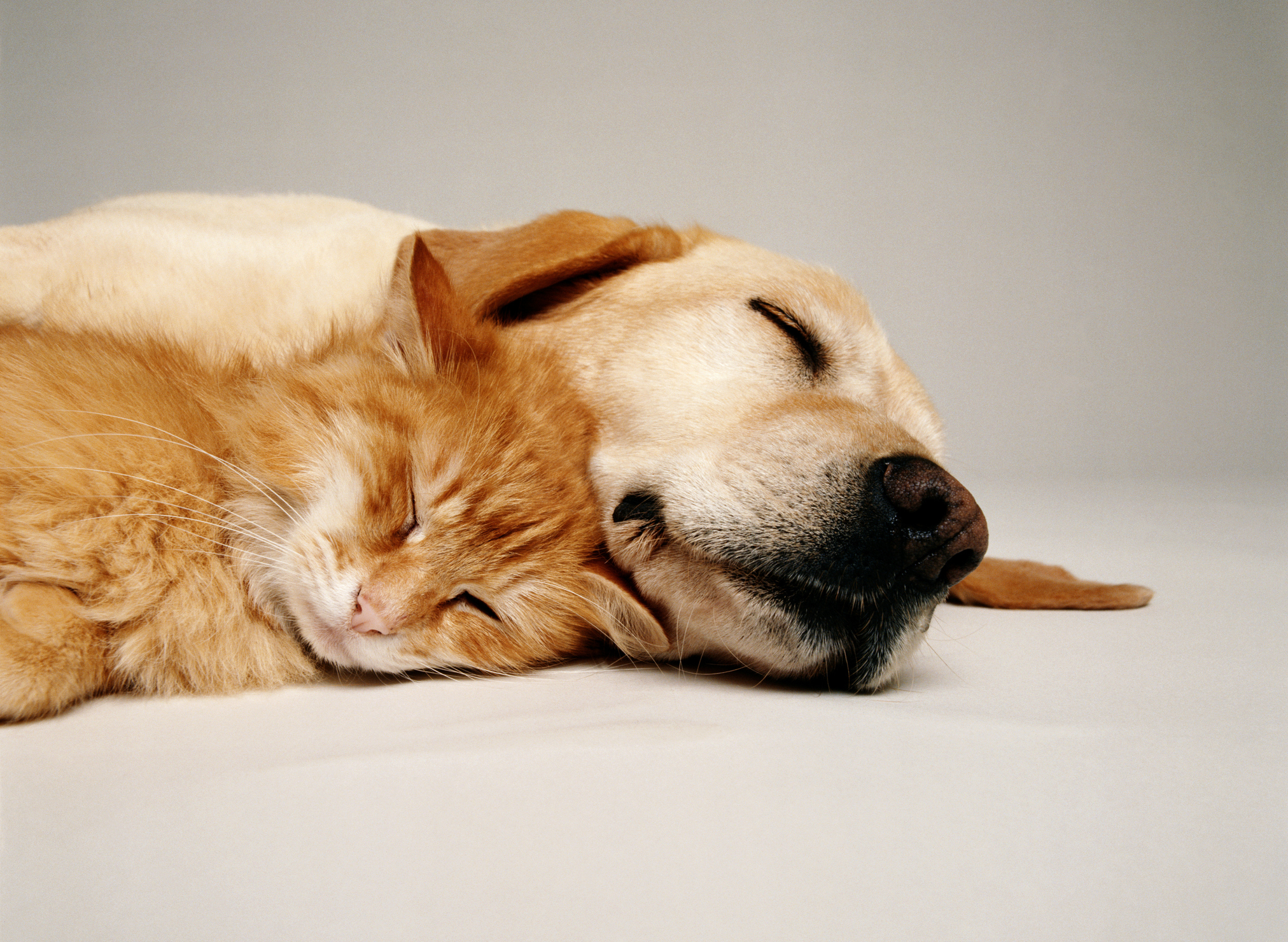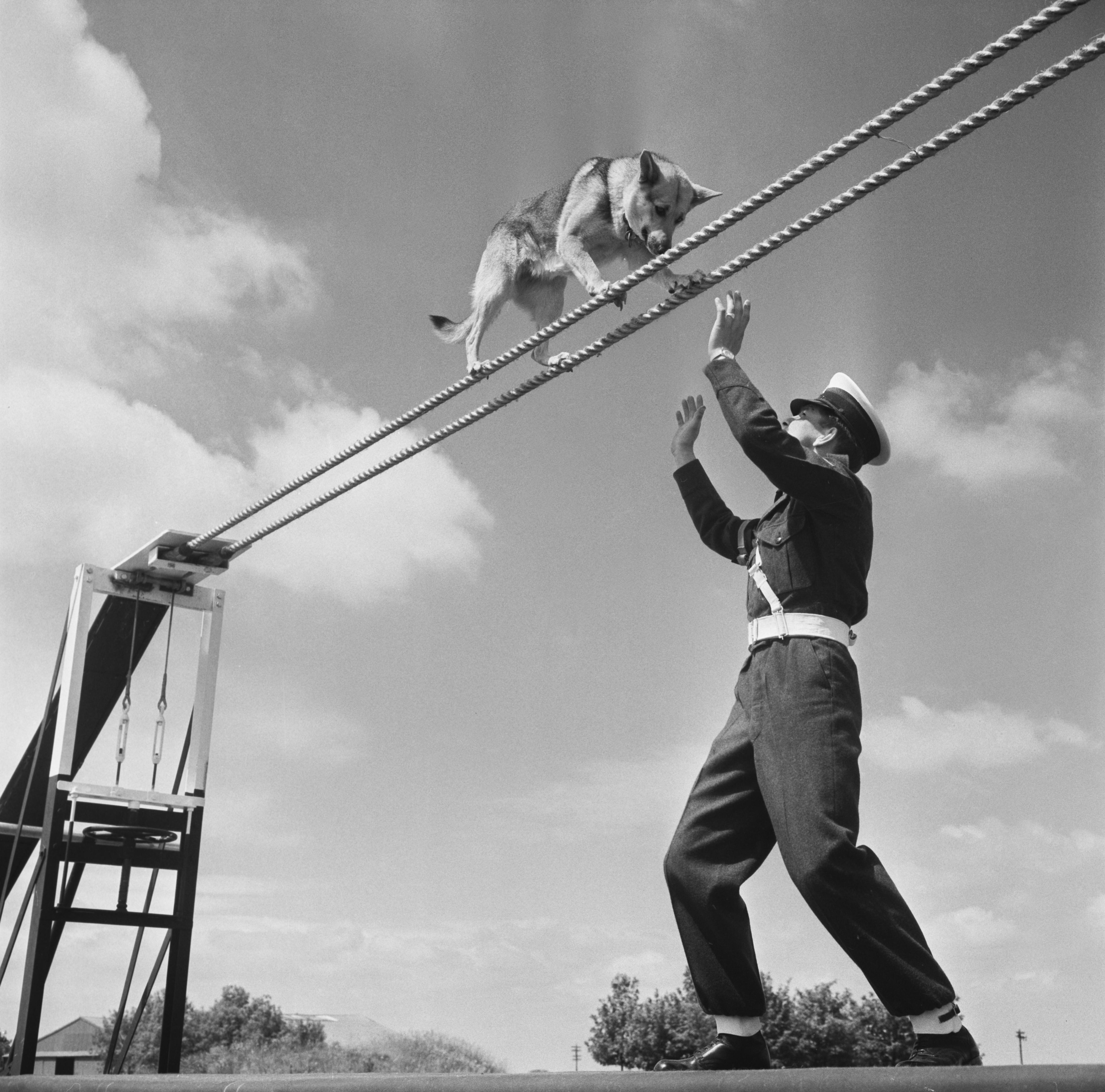How to stop a puppy getting overexcited and peeing on the floor, by expert trainer Ben Randall
A problem familiar to almost all owners who have raised a dog from its earliest days comes in for Ben's advice this week: how to stop a puppy peeing when it gets excited.


The joys of owning a dog always outweigh the trials that ownership can bring. And yet, sometimes, we run in to problems which really test us.
Dealing with a puppy who develops a habit of weeing in the worst possible place, at the worst possible time, is one of them. The first time it happens can be cute and charming — 'ahh, look, he's so excited he's done a little wee!' — but by the third or fourth time you've got out the bucket and a sponge you'd be forgiven for asking yourself if perhaps a goldfish might have made a better pet. (It wouldn't have done.)
All of this brings us to this week's reader, who emailed me at paws-for-thought@futurenet.com to ask for advice on a puppy who just can keep his pee in when he gets excited.
Dear Ben, I'm looking for some advice about my 11-month-old puppy. She's generally good and well house-trained, but when people come to visit she always pees on the floor. Please can you help? — M.B., via e-mail.
This is something that I see and hear a lot — and also, something I've experienced with my own dogs over the years. In the majority of cases it's the over-excitement of new people – or something else exciting — entering the house.
This is understandable, especially with younger dogs. Yeah. However, weeing all over the floor, for your guests to walk through, or over your guests feet is unacceptable, to say the least! We need to stop it as quickly as we can; if left to continue it could potentially become an ingrained habit in the dog's life.
So here’s what to do to turn it around, and stop that puppy from weeing on the floor when it gets over-stimulated.

How to stop a puppy peeing on the floor when it's excited
1. Resist the urge to get down to your puppy’s level
I’ve often found that if I have a young puppy and get down to its level with my hands in the ground, and speak to it in a high-pitched voice, it’ll love it, getting very wiggly and very silly… and before you know it, there’s pee all over the floor. And it’s exactly the same when visitors come in, because that’s always what they do: getting down to the puppy’s level and entertaining it with funny voices — and it all adds to the overall excitement of your young dog.
Exquisite houses, the beauty of Nature, and how to get the most from your life, straight to your inbox.
2. Stand tall and play it cool
When my young dogs start to come up to me, instead I try to stand tall, not get down to their level, and even ignore them ever so slightly when they come up to me. After a few days, the puppy realises that I'm not going to pay attention to him for that, or for weeing everywhere. Instead, they’ll normally start to come up to me, have a sniff, then just carry on around me — and the peeing stops.
3. Find different ways to interact with your dog
Step two will help with the peeing problem, but obviously you don’t want to ignore your dog — instead, find a different way to have a lovely, close interaction. Learning to put the lead on your puppy is a great opportunity for this, for example, as is taking a ball or toy from the dog.
So what I start doing is, during each feeding time, teach the dog to sit, then stay in the area whilst I walk away. Then I’ll grab a bowl of kibble, call the dog towards me, and give the bowl a slight shake to make a noise. The dog will lift its head towards me and look at me, and I then take a piece of kibble to give him as a reward as he’s looking at me. Then I’ll repeat that process; I’ve now given the dog something else to take his mind off instead of weeing.
Once this is working really well during feed times, I’ll start to call the dog to me during the day and just lower my hand. When the dog lifts its head into my hand I lightly stroke and quietly and calmly praise the dog, and then ignore him again. I normally find after two or three days the dog has stopped weeing, because we've now given the dog something else to concentrate on.

4. Use lead training and heel training to keep him in the pattern
I used to have a cocker spaniel, and when I used to go down to put him on the lead, he was very soft and biddable and would lie on his back — so one day I thought I’d go down to his level to play with him whilst he was on his back. And then with his ‘very accurate water pistol’ he completely shocked me by covering me: his pee was all over my trousers, my shirt, everywhere.
As you’ll imagine I learned very quickly that whilst he was in that position, I most definitely wouldn't go anywhere near his head with lead!
After that, I taught him a more positive association with a lead, to teach him the heel command. Put your hand out with some kibble and show it to the dog, then as its head comes close to me I put the loop of me lead over the dog's head, and calmly reward the dog and continue our heel training, or go for a walk. It’s really quite simple — and you’ll get almost instant results.

5. Remember that visitors have to respect your rules
When it comes to asking your visitors help you with these routines, remember this: it’s your front door, your locks and your house — you decide when people come, and when people go, and there’s never a rush. So, simply don’t answer the door if your dog is going crazy and potentially cause the training to be undone — take your time, call through the letterbox and ask your guests to give you a minute, as I went in to detail with in my piece about stopping a dog barking at the door.
In that article, I explained how to train a dog to react calmly to the doorbell and head back to his or her bed or other safe place, knowing that a treat and a reward will be coming for this good behaviour.
Once the guests are over the threshold, ask them to make sure they don’t get on their knees or haunches and fuss over the dog at a low level, instead following your example of staying tall and ignoring them just a little. Demonstrate your new routine with the kibble, show how well your dog can stay sitting while you keep the treat in your hand, show how to then call him to you — and then let them have a go too. And make that they know if they get down to the dog’s level and starting cooing, they might well get covered in pee!
For more detailed advice about Ben Randall’s positive, reward-based and proven BG training methods, one-to-one training sessions, residential training or five-star dog-boarding at his BGHQ in Herefordshire, telephone 01531 670960 or visit www.ledburylodgekennels.co.uk. For a free seven-day trial of the Gundog app, which costs £24.99 a month or £249.99 a year, visit www.gundog.app/trial

Credit: Getty Images
How to get your dog to walk to heel
Teaching your dog to stop pulling on the lead takes work, but it’s an important step in training that will

How to stop your dog from barking on a walk: Five tips from top dog-trainer Ben Randall
While out on a walk, it’s not always easy to stop your dog from barking at people — and if

Should I use a dog harness instead of a lead? Expert trainer Ben Randall shares his advice
Owning a dog that can pull you along might make you consider using a harness instead of a lead — but

Ben Randall: Ask Country Life's canine agony uncle a question about your dog
Over the past two years our award-winning dog trainer Ben Randall has been sharing his advice with Country Life readers.

Credit: Getty
How to introduce a puppy to your cat, by expert dog trainer Ben Randall
Introducing a dog to a cat can be nerve-wracking, but get it right and the two of them can get

How to adopt a dog without it upsetting the pets you already have, by top trainer Ben Randall
Though some dog owners are happy to stop at one, many of us like to bring more into the home

Are you overtraining your dog? The signs to look for, and how to put it right
A reader this week suffers from a dog who can't concentrate and is getting distracted all the time, but with
